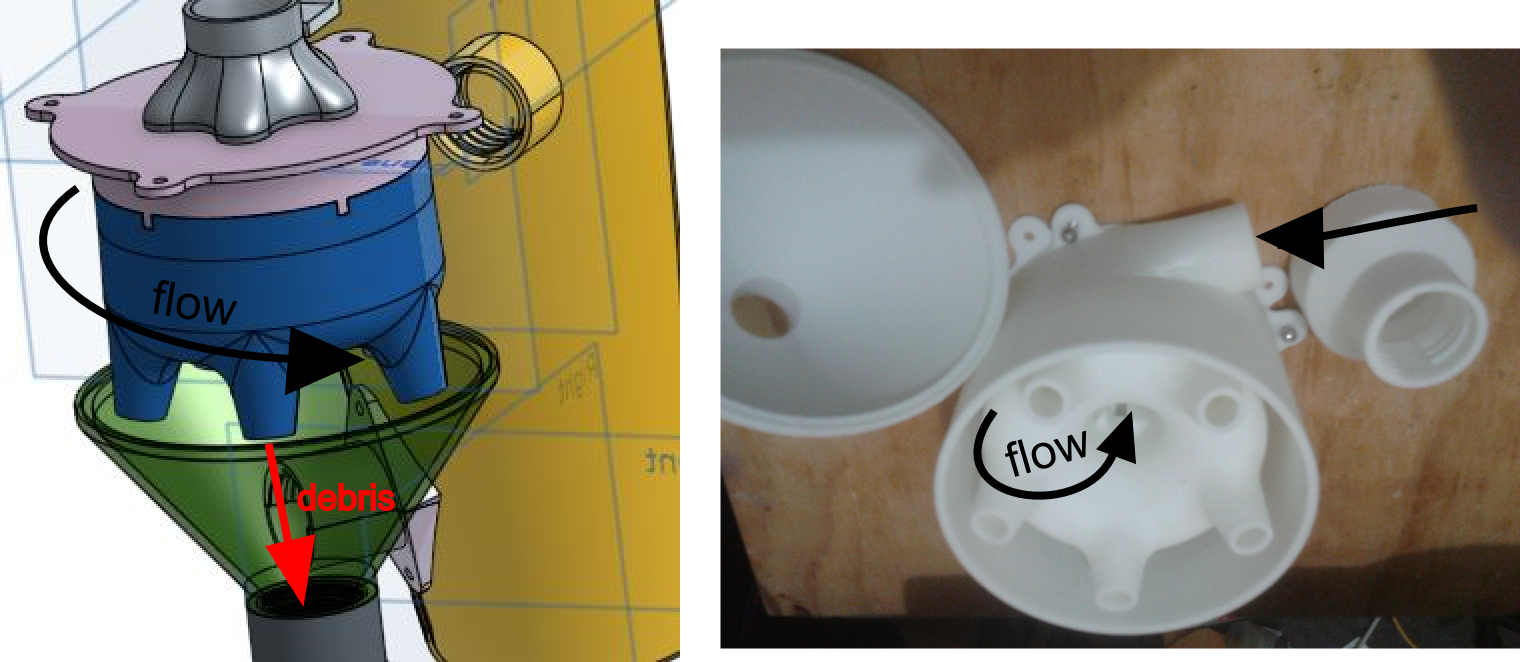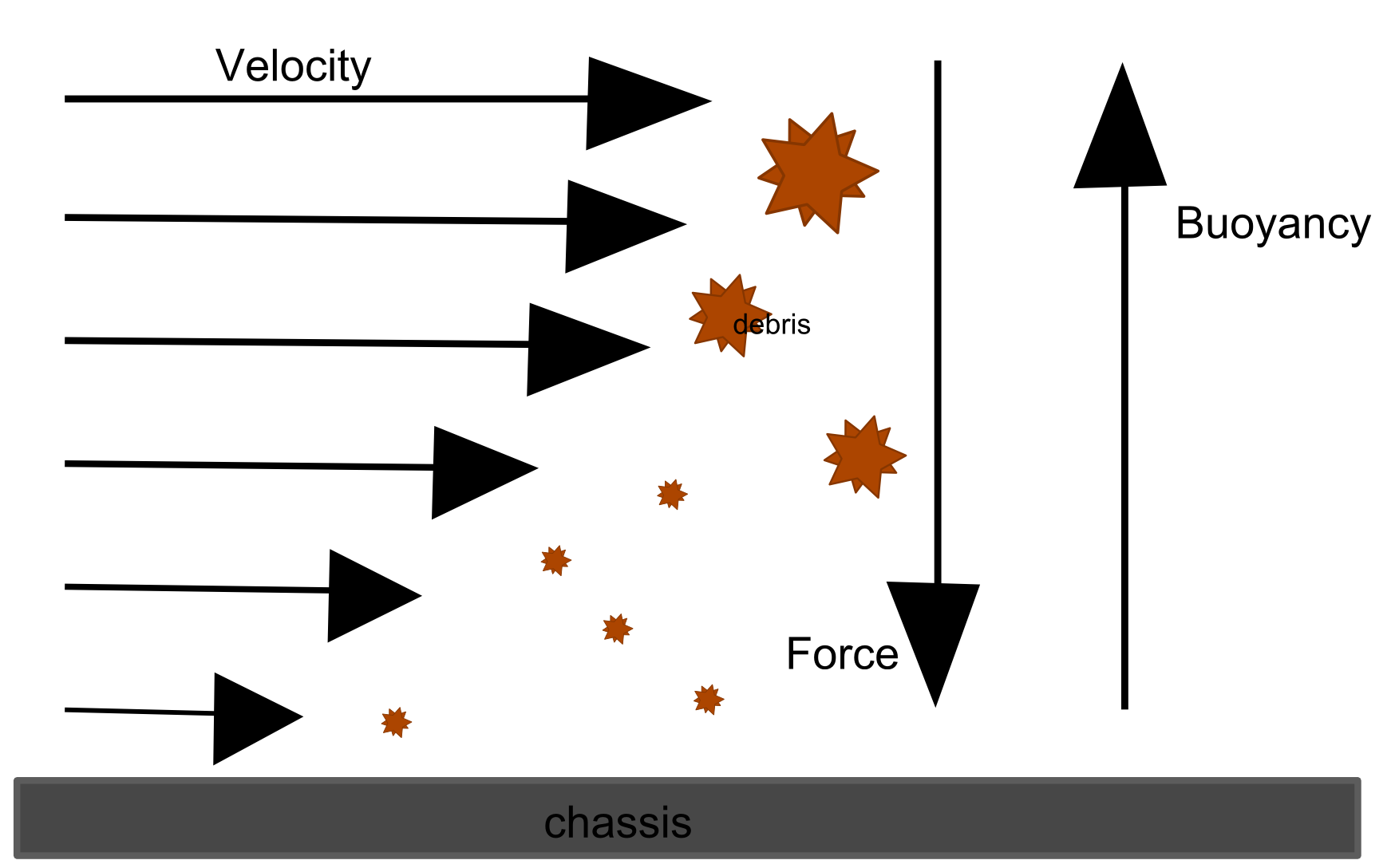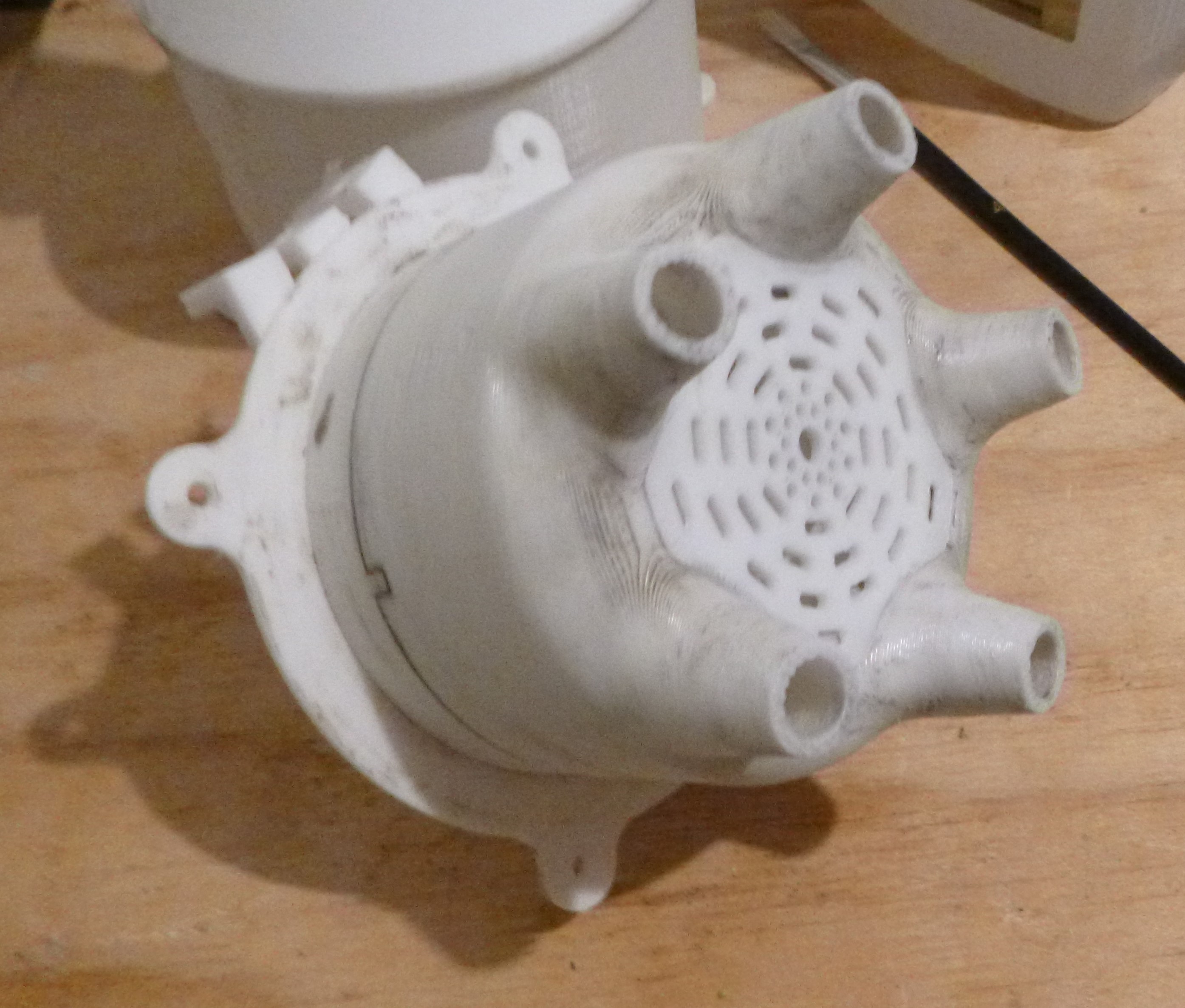After running and trying the vacuum under different condition I developed an understanding of how this device does and doesn't work. Initially this device did seem to work to some extent, but this did not last long and alterations were make to address the issues. These alterations did not work at all and made the device not functional. However, it gave an insight into how such a cyclone vacuum system works.
Outlining the issues and why they are important to function.
The purpose of this project is to remove the fine particulate from the air before it gets to the supplied filter. Initially this was successful and the only debris that accumulated around the filter were the larger and lighter, eg. plant material. So the this gave the first result about the fluid flow structures and the causes of these structures.

The basic illustration of the flow structures above forms the input and initial sorting mechanism. Here is where the main area of the design impacts how effective the sorting mechanism is. As the flow rotates about the centre the debris is forced against the exterior. However, inherent in 3D printing the surface is not smooth stalling the debris and reducing the force against the wall. My thinking is that this explains why the larger and lighter plant material does not deposits into the bottom of the system. This in turn clogs up the rest of the system slowly deteriorating its effectiveness. The image below attempts to illustrate the physics of the boundary conditions with forces.

To counter the clogging of the of the system a grate was placed across the entry of the main cyclone mechanism. This caused more problems than it solve. Air was then pulled into the cyclone exist therefore destroying the mechanisms function. This super poor decision at least reinforce the need and reasons for a redesign of the inlet and cyclone mechanism.

Improvements for Second version.
- Separating of the of the debris collection and flow structures need to be more pronounced.
- Assembly need to be easier.
- Simpler design with lower part number without the need of solvent welding.
- Redesign for printing.
- Debris collection is easily accessible.
- Hoses need to be attached easier.
 Nelson Phillips
Nelson Phillips
Discussions
Become a Hackaday.io Member
Create an account to leave a comment. Already have an account? Log In.